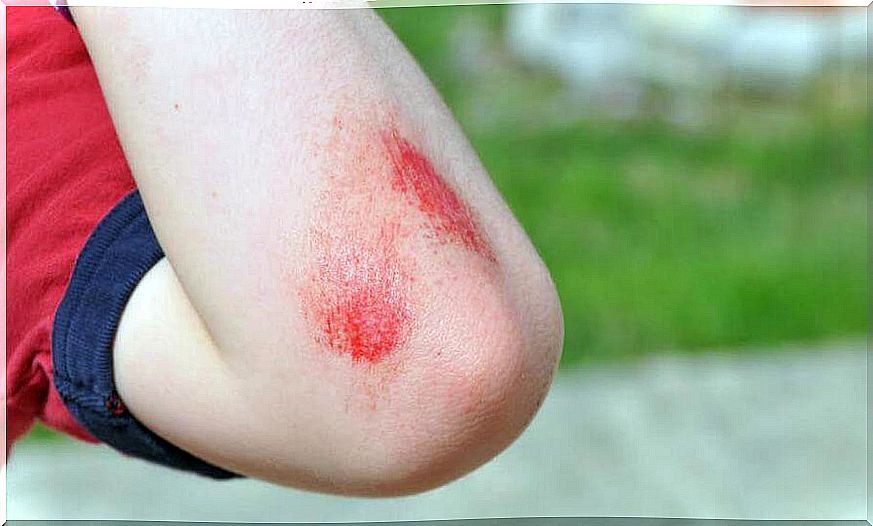Tularemia: Symptoms And Causes
Tularemia is an infectious disease caused by the bacterium Francisella tularensis . This bacteria resists cold climates and is not destroyed by substances such as bleach. However, it is quite sensitive to many common household disinfectants.
The disease is considered an anthropozoonosis, that is, an infection that circulates between animals but is capable of being transmitted to humans at some point. The species that function as a reservoir for the bacteria are small mammals.
Mice and squirrels, as well as hares and rabbits, could be named as reservoir animals for the bacteria. Its worldwide distribution is in the northern hemisphere: Europe, Asia and North America.
The disease has been known among doctors since 1911. It was precisely in California that an outbreak was described that led to the identification of the bacteria. To date, one hundred years later, it is considered a disease capable of being used as a biological weapon, hence the legal obligation to notify the authorities when a confirmed case appears.
Tularemia facts
Tularemia has two preferential ages where it appears: among children from five to nine years old and among the elderly over 75. It prevails in two periods of the year: summer in the northern hemisphere – from May to August – and winter – November to February.
Due to its form of contagion, there are certain people with certain professions or customs who are more exposed, among them:
- Gardeners: expose themselves to inhalation of bacteria.
- Veterinarians: for their direct contact with animals.
- Hunters: those who practice hunting expose themselves to the carcasses of the animals and to the ingestion if they eat them.
Ways of contagion of tularemia
Tularemia is transmitted from animals to humans, and between animals themselves, but never between humans. A sick person will not be able to infect another healthy person. Therefore, isolation of patients is not necessary.
Now, among the transmission routes from animals to humans, we can describe:
- Physical contact: it is the most frequent form of contagion. The human being comes into direct contact with the body of the animal infected with tularemia. In general, transmission occurs through the existence of wounds and exposure of the mucous membranes. The most exposed are rural inhabitants, hunters, veterinarians and farmers. It can be contact with live animals or corpses.
- Stings: Arthropods have been identified that also function as disease carriers. Ticks and horseflies, for example. For a decade, transmissions have also been certified from animals that were not previously considered, such as crayfish.
- Contaminated water: it is a minor form of contagion, but not negligible. In the United States, it is estimated that up to ten percent of infections are due to the consumption of water contaminated with the bacteria.
- Inhalation: in the suspended dust that accumulates after agricultural activities, the bacteria can remain floating. The human being inhales this dust and the disease attacks the respiratory system.

Symptoms of the disease
The incubation period is short; this is the time that passes between contact with the bacteria and the appearance of symptoms. Usually three to five days is the delay. In some people, it may take up to fourteen days for the first symptom.
According to the place of entry of the microorganism, it is the clinical picture, which can manifest itself with the following varieties:
- Ulceroglandular: it is the most common form of presentation. It happens when the contagion was by physical contact through the skin, then an ulcer forms at the site of contagion. This is followed by fever, swollen glands, severe exhaustion, and headache.
- Glandular: it is a variant of the ulceroglandular form, only without the entry point ulcer on the skin.
- Ocular: this clinical picture is characterized by symptoms related to the eye. The infected person has eye pain, eyelid discharge, redness of the eyes and swelling of the soft tissues near the palpebral area.
- Oropharyngeal: it is a manifestation in the digestive system of tularemia. It is usually present when the route of infection was the ingestion of contaminated meat or water. Patients suffer from fever, sore throat, vomiting, diarrhea, and ulcers are located inside the mouth.
- Pulmonary: it is actually pneumonia caused by the tularemia bacteria, so the symptoms are cough, fever, chest pain and shortness of breath.
- Typhoid: it is the least frequent manifestation, but possibly the most serious. Organs such as the spleen and liver become enlarged, the fever is very high, and the digestive system is affected with vomiting and diarrhea.

Treatment of tularemia
Tularemia has effective treatment and they are antibiotics. It is a serious disease, but detected early, it can be completely cured with the proper administration of these drugs.
Antibiotic treatment can be orally or with injections, intramuscular or intravenous. The drugs of choice are streptomycin and gentamicin. When the oral route is preferred, doxycycline is usually prescribed. The doctor will decide, according to the clinical picture and the characteristics of the patient, which is appropriate.
Along with the antibiotic, the corresponding support measures are given for each symptom. Fever fever, antiemetics, and pain relievers can be given. Hospitalization is an option if there is dangerous organ compromise.
It is assumed that once infected with tularemia, the person becomes immune to the bacteria for the rest of his life. This means that you could not catch it again. However, science has registered recurrences, so preventive measures are still mandatory for those who suffered it.
So if you have been in environments with the presence of rodents, you found yourself practicing hunting or performing work tasks associated with the veterinary and farm, and after a few days you start with a fever, consult a professional to examine you.









